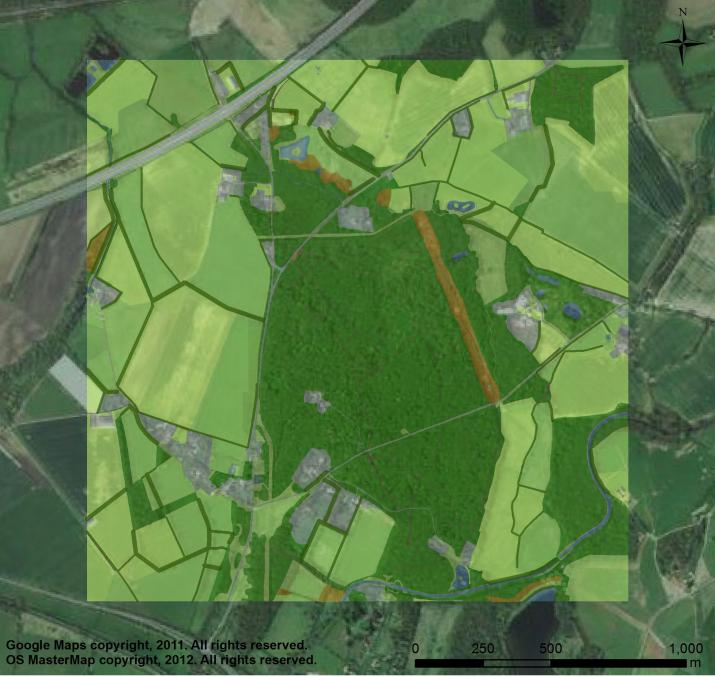
The importance of the composition and configuration of habitats for woodland ground beetle communities in agricultural landscapes
Although woodland species are inherently associated with the immediate woodland habitat within which they exist, the long-term survival of species populations is highly dependent on factors acting throughout the wider landscape.
Ground beetles were recorded in 36 broadleaved woodlands in order to see how their populations were affected by the composition and configuration of habitats in the surrounding landscape.
Key Findings
- Results from the research support the idea that landscapes function as entire ecological units rather than as separate components, and ground beetle populations respond not only to the type and amount of habitat but also the interactions and configuration of the different elements throughout the landscape.
- In wooded-agricultural landscapes, semi-natural habitats such as scrubland, rough grassland and water-bodies are important for supporting diverse woodland ground beetle communities. The presence of semi-natural habitats that were dominant in the landscape prior to agricultural intensification are particularly valuable.
- Hedgerows are also essential structural landscape features. They provide overwintering habitat for spring-breeding ground beetles and facilitate the movement of larger-bodied slow-dispersing woodland species, particularly in landscapes with a high degree of woodland fragmentation.
Recommendations
- Semi-natural habitats and linear features have high biodiversity value in wooded-agricultural landscapes and should be of conservation focus.
- Agri-environmental options need to consider both the composition and configuration of the surrounding landscape in order to identify the most effective options that will help to maintain biodiversity.
- Retaining or replacing features characteristic of the original environment may help to encourage species to persist following landscape change.
Background
Ground beetles (Coleoptera; Carabidae) have been extensively studied within woodland and agricultural ecosystems and are considered to be highly sensitive to landscape modification making them useful bio-indicators of landscape change. Many are predators eating a variety of invertebrates, such as aphids and slugs, and act as a natural pest control in agricultural landscapes, gardens and allotments. They also form an important food source for birds and small mammals. Some ground beetle species are capable of flight, although many larger-bodied woodland species are flightless and have a mean daily movement rate of about 15m. Many are nocturnal and need some form of shade during the day. They can be found throughout the year, although a number of species hibernate during the coldest winter months.
Paper
Neumann, J.L., Griffiths, G.H.G., Hoodless, A.& Holloway, G. J. (2015) The compositional and configurational heterogeneity of matrix habitats shape woodland carabid communities in wooded –agricultural landscapes. Landscape Ecology. Doi:10.1007/s10980-015-0244-y
Other References
Woodlands.co.uk blog: Ground beetles - carabids declining (opens in new window)
Royal Entomological Society - Ground beetles(Coleoptera) (opens in new window)